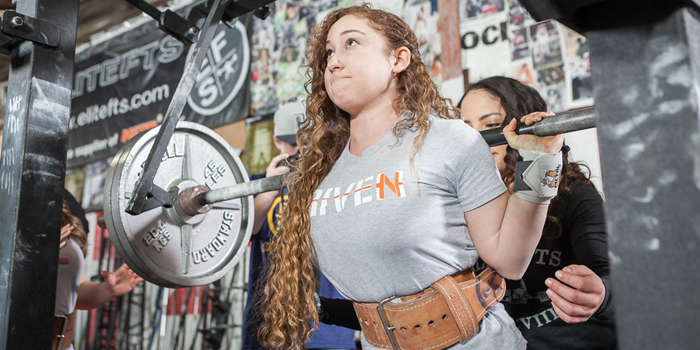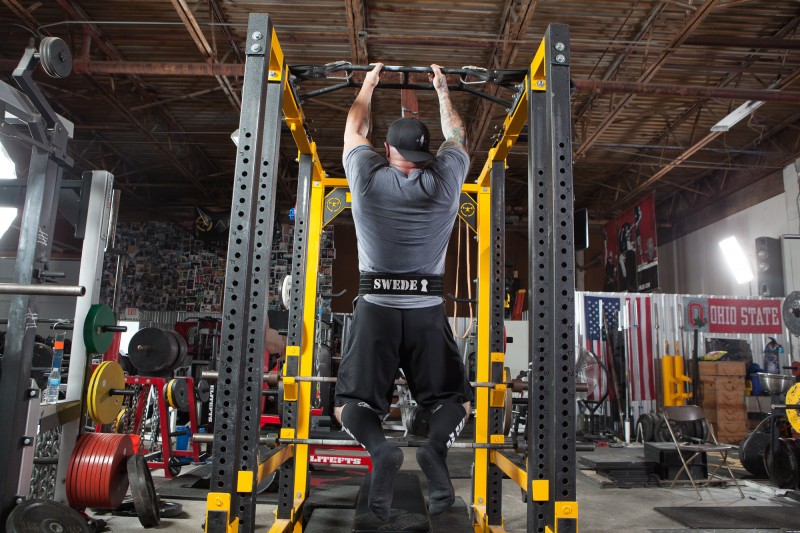
As someone who has had to work extremely hard to make gains, I’ve always hated the idea that “if you don’t use it, you lose it.” Muscle memory is the idea that skeletal muscle remembers it used to be large, and after a period of detraining and size reduction, it can get back to that size faster than a muscle that hasn't been big before. So, as someone who also is a scientist, I've never taken comfort during times off from training that I wouldn't lose those gains. Why? Because the data supporting muscle memory has always been lacking. That is, until recently. It turns out muscle memory isn’t just a fitness field pseudo-phenomenon. I’m going to explain to you how it works and share some new findings in the field of muscle memory as it relates strictly to muscle growth.
Muscle Growth and Remembered Growth
When a muscle cell undergoes hypertrophy, muscle stem cells get activated, proliferate, and fuse to areas of training-induced muscle injury. In the process of this happening, the muscle stem cells contribute their myonuclei to the damaged fiber. Myonuclei are the inner control centers of muscle fibers (there are many per fiber) that contain DNA and act as the site of gene expression regulation. It’s this control center that decides when to crank up the protein synthesis required to make your muscles grow.
RECENT: To Swab or Not to Swab: Genetic Testing and Performance
Here is the cool thing: as your muscles grow, they increase their number of myonuclei. Muscles do this because each myonuclei controls a proportion of the fiber, and as the muscle gets bigger, they require more myonuclei because there is more area to control. This idea of myonuclei controlling a specific area of muscle, and the addition of them, as a muscle gets bigger is called "myonuclear domain." Scientifically, this has been confirmed, with studies showing that the number of myonuclei is proportional to sarcoplasmic volume1,2,3. This addition of myonuclei from training-induced damage is rather permanent, and muscle loss from periods of detraining is insufficient to reduce the number of myonuclei acquired from previous anabolic stimuli5,6,7. So, with these myonuclei regulating the expression of genes involved in making muscles grow, and in the regulation of synthesizing the new proteins required for muscles to grow, it's probably understandable how after periods of detraining, it would be easy to reacquire you gains with all those extra myonuclei hanging around. These myonuclei are your muscle memory, and they aren’t going anywhere. In this case, if you don’t use it, you don’t lose it.
Putting Muscle Memory to the Test
The addition of myonuclei is vital in the context of hypertrophy. Fibers with more nuclei grow faster when subjected to overloading types of exercise. In 2013 a study was done to understand if muscle memory was a thing8, and took things a step further. In this study, they treated mice with either testosterone or a placebo for two weeks. Testosterone, an anabolic agent, resulted in both an increase in muscle fiber size and in myonuclear number. Following three weeks of no testosterone treatment, fiber size went back to normal, but the myonuclear number stayed high. And, this stayed high for up to three months. After three months of no anabolic stimulus, they then subjected mice to muscle overload and showed that the muscle with more myonuclei (the test group) experienced a 36% increase in muscle size, whereas the control group only grew 6%. This trend of the more myonuclei in growing muscle previously exposed to an anabolic stimulus continued for the duration of the two-week study. So of course, the overall takeaway is that myonuclei are critical mediators of muscle memory. Also, for those that train, there is the takeaway that re-training, after a period of no training, allows for faster muscle growth when compared to training a naïve fiber for the first time. Finally, for the enhanced trainee, the takeaway is that testosterone administration is sufficient to make an untrained muscle acquire the myonuclei of a trained muscle, and that this ultimately leads to faster muscle growth in response to an overload stimulus compared to a non-enhanced muscle.
The Epigenetics of Muscle Memory
Epigenetics is the study of how different stimuli from the environment alter the expression of genes. A recent paper came out9, in humans, showing that DNA methylation status changes in response to training, time off, and retraining. DNA methylation is an epigenetic mark that involves adding a bulky methyl group to DNA. When this happens, the presence of the methylation mark makes it difficult for a gene to be transcribed, ultimately inhibiting that gene from being expressed (until the mark is removed). But why does this matter in the context of muscle memory?
RELATED: Seven Tips to Get Your Ass Back in the Gym
Well, in the paper the authors showed that muscle has an “epigenetic memory” that is derived from muscle’s DNA methylation status. What does this mean? It means they showed that in response to an acute resistance exercise, the DNA sequence of some anabolic genes lose methylation marks and become hypomethylated, thus allowing them to be turned on or expressed. During time off from training, they also showed that an increase in hypermethylation occurs, suggesting that many genes that are turned on by training get silenced. What's coolest to me is that they found that during a period of time off from training, a subset of pro-hypertrophic genes do not get hypermethylated, and thus remain ready to be turned on quickly during re-training periods. Finally, they found that returning to training after time off, a time when lean mass was increased the most, corresponded to a much more significant loss of methylation marks across the genome, and a more significant increase in gene expression. This finding suggests that muscle’s epigenetic memory is in part responsible for the more sensitive hypertrophic response of a trained muscle compared to a naïve one.
Takeaway
At the end of the day, there is probably enough evidence to suggest that if you don’t use it, you won’t lose it. Sure, you might lose some mass, but you won’t be losing those myonuclei, which will ultimately allow you to get back to where you were, fast.
References
- Brack, A. S., Bildsoe, H. and Hughes, S. M. (2005). Evidence that satellite cell decrement contributes to preferential decline in nuclear number from large fibres during murine age-related muscle atrophy. J. Cell Sci. 118, 4813-4821.
- Mantilla, C. B., Sill, R. V., Aravamudan, B., Zhan, W.-Z. and Sieck, G. C. (2008). Developmental effects on myonuclear domain size of rat diaphragm fibers. J. Appl. Physiol. 104, 787-794.
- Wada, K. I., Katsuta, S. and Soya, H. (2003). Natural occurrence of myofiber cytoplasmic enlargement accompanied by decrease in myonuclear number. Jpn. J. Physiol. 53, 145-150.Warner, J. R. (1999). The economics of ribosome biosynthesis in yeast. Trends
- Bruusgaard, J. C., Johansen, I. B., Egner, I. M., Rana, Z. A. and Gundersen, K. (2010). Myonuclei acquired by overload exercise precede hypertrophy and are not lost on detraining. Proc. Natl. Acad. Sci. USA 107, 15111-15116.
- Bruusgaard, J. C., Egner, I. M., Larsen, T. K., Dupre-Aucouturier, S., Desplanches, D. and Gundersen, K. (2012). No change in myonuclear number during muscle unloading and reloading. J. App. Physiol. 113, 290-296.
- Bruusgaard, J. C. and Gundersen, K. (2008). In vivo time-lapse microscopy reveals no loss of murine myonuclei during weeks of muscle atrophy. J. Clin. Invest. 118, 1450-1457.
- Bruusgaard, J. C., Liestøl, K. and Gundersen, K. (2006). Distribution of myonuclei and microtubules in live muscle fibers of young, middle-aged, and old mice. J. Appl. Physiol. 100, 2024-2030.
- Egner, I. M., Bruusgaard, J. C., Eftestøl, E. and Gundersen, K. (2013). A cellular memory mechanism aids overload hypertrophy in muscle long after an episodic exposure to anabolic steroids. J. Physiol. 591, 6221-6230.
- Seaborne, R. A., Robert, A., Strauss, J., Cocks, M., Shepherd, S., O’Brien, T. D., Van Someren, K. A., Bell, P., Murgatroyd, C., Morton, J., Stewart, C. E., Sharples, A. P. (2018). Human Skeletal Muscle Possesses an Epigenetic Memory of Hypertrophy. Scientific Reports. 8:1989.












I would just bring one item to attention from other previous research
"Atrophic stimuli. Atrophy of skeletal muscle results in a reduction in myonuclei number and can be induced by numerous factors including denervation, hindlimb
suspension, and malnutrition."
Grounds MD. Muscle regeneration: molecular aspects and
therapeutic implications. Curr Opin Neurol 12: 535–543, 1999
Has the current literature showed otherwise? Thanks.
That is a review article, do you happen to know the studies it references that demonstrate that? It's hard for me to comment on this without knowing which studies the review references. But, I will try my best!
The idea in the field currently (to the best of my knowledge), is that this finding in older studies was concluded due to technical limitations. For example those using histological analysis to define myonuclear loss with atrophic stimuli have demonstrated that there is a reduction, however, that type of staining they used does not distinguish a muscle myonuclei from the nucleus of other cells in muscle (of which there are many: muscle stem cells, immune cells, etc) making it difficult to actually conclude that what's observed is a loss of myonuclei and not stem cells. Other methods that have resulted in this finding are ones that identified increases in markers for apoptosis in whole muscle, and then from that finding concluded that myonuclei were dying off with atrophic stimuli. Hence, neither of those methods is really optimal to draw the conclusion that an atrophic stimulus promotes myonuclear loss.
Currently, new methods like in vivo time-lapse imaging (you can watch myonuclei in a fiber over time) have been used to show that the number of myonuceli do not change following atrophic stimuli (like denervation, nerve impulse block models, detraining, hindlimb suspension, and antagonist ablation). The idea that myonuclei are not lost with aging is also supported by studies isolating myofibers and counting the number of myonuclei in normal and atrophic conditions.
Hope that helps answer your question!
Jenn